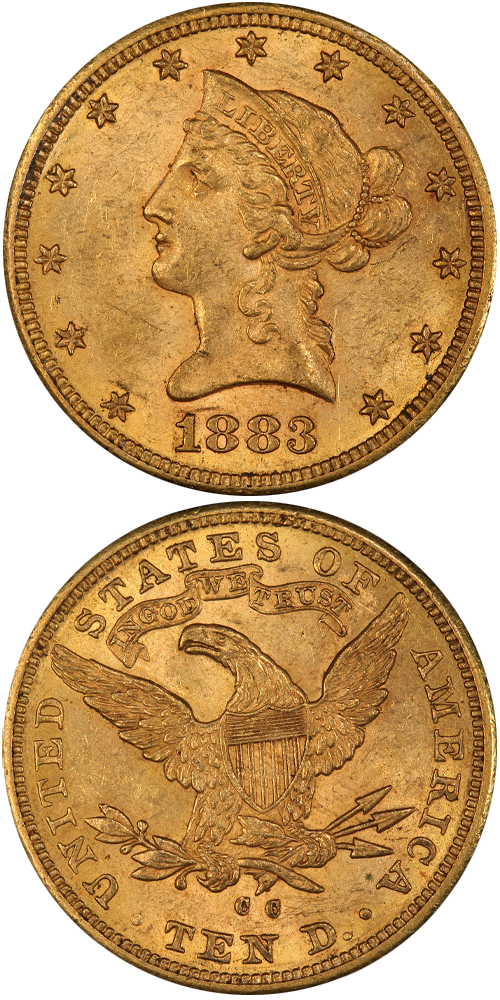1883-CC Liberty Head Eagle
Jeff Ambio: The only known obverse of the 1883-CC Liberty eagle is characterized by a large, well centered date with the digits fairly even from left to right. Reverse B exhibits a moderately tall, widely spaced mintmark with the first C sharply higher than the second. The first C is above the left edge of the letter N in TEN and the second C is over the right side of the N.
Rusty Goe: After a devastating decline in mineral yields between 1880 and 1882, a small revival of sorts brought sparks of life back to the Comstock in 1883, partly through efforts to work low-grade ores still in the one-time richer shafts. Owners of smaller mining operations in remote locations in Nevada shipped their bullion deposits to the Carson City Mint in 1883, which helped to triple the mint's precious metals receipts compared to what it had received back in 1880-1881. Coiner Levi Dague struck the only run of gold eagles in July. The 12,000 pieces dated 1883 represented nearly a doubling of the previous year's total.
Q. David Bowers: Rusty Goe estimates 295 to 350 1883-CC eagles survive with six to nine in Mint State. My estimate is 125 to 175 in circulated grades and three to five Mint State. Jeff Ambio suggests five in Mint State. In any event, there aren't many around! Thanks to repatriation of exported eagles the typical grade seen today in many collections is EF or so, a contrast to, for example, William H. Woodin's "1883-CC Fine; scarce" sold by Thomas L. Elder for face value in March 1911. It was not until the 1930s that much numismatic respect was paid to high-denomination gold coins.
The example to the left was sold by Stack's Bowers Galleries in the May 2013 New Orleans ANA Auction, where it realized $64,625.






